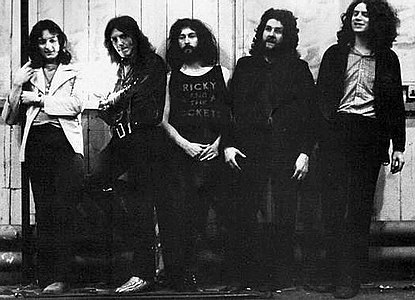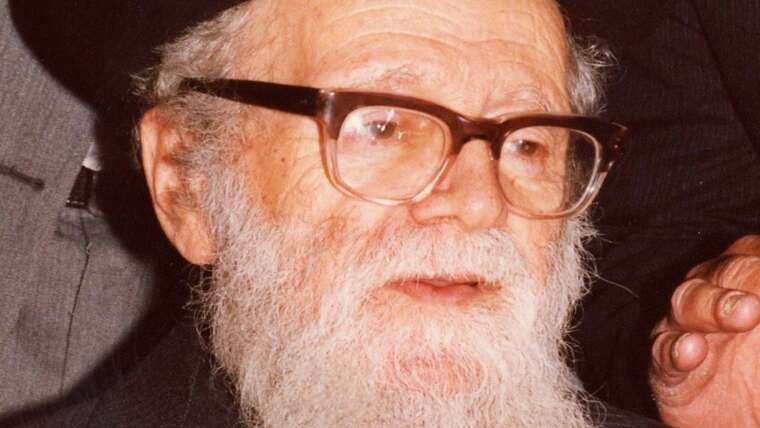One doesn’t usually think of the rock group Supertramp when studying Mishna … but maybe we should. Towards that end, maybe you’d like to play this song in the background as you read the below post.
The Mishna in question is the very first to appear in the Tractate of Shabbat, while the topic in question is the halacha relating to carrying on Shabbat, or more specifically, the prohibition of carrying on Shabbat. Here is the Mishna along with the translation provided by the excellent website Sepharia.org:
מתני׳ יציאות השבת שתים שהן ארבע בפנים ושתים שהן ארבע בחוץ
MISHNA: The acts of carrying out from a public domain into a private domain or vice versa, which are prohibited on Shabbat, are primarily two basic actions that comprise four cases from the perspective of a person inside a private domain, and two basic actions that comprise four cases from the perspective of a person outside, in a public domain.כיצדThe mishna elaborates: How do these eight cases take place? In order to answer that question, the mishna cites cases involving a poor person and a homeowner.
העני עומד בחוץ ובעל הבית בפנים פשט העני את ידו לפנים ונתן לתוך ידו של בעל הבית או שנטל מתוכה והוציא העני חייב ובעל הבית פטור:
The poor person stands outside, in the public domain, and the homeowner stands inside, in the private domain. The poor person lifted an object in the public domain, extended his hand into the private domain, and placed the object into the hand of the homeowner. In that case, the poor person performed the prohibited labor of carrying from the public domain into the private domain in its entirety. Or, the poor person reached his hand into the private domain, took an item from the hand of the homeowner, and carried it out into the public domain. In that case, the poor person performed the prohibited labor of carrying out from the private domain into the public domain in its entirety. In both of these cases, because the poor person performed the prohibited labor in its entirety, he is liable and the homeowner is exempt.
***
When I first studied this Mishna I, like most students I imagine, focused on the laws of carrying on Shabbat, the intricate details of what is a public domain and a private domain, and how one must act in order to avoid violating the prohibition of transferring an item from one domain to the other.
And then it hit me! All this is interesting – and important – of course. But even more significant, I believe, is the example the Rabbis chose to utilize to make their point: A relatively comfortable individual trying to help out a relatively poor individual. In short, an act of Tzedaka.
So many other examples of carrying could have been highlighted, but the Rabbis chose this one as the paradigmatic action one is customarily involved in on Shabbat. That, in itself, is radical; after all, most tzedaka involves money, and handling money of course on Shabbat is prohibited, so the Rabbis must have been alluding to a more permitted activity such as providing food for the holiday. Certainly that’s a possible scenario that might take place in one’s life, but by no means a necessarily common one. How often do poor people knock on your door on Shabbat? Or more intriguing: How often do you knock on the door of a poor person on Shabbat?
That the Rabbis bring this example suggests a few things. First, of course, we should always be thinking about how we can help others – even when learning about what otherwise appears as a relatively ‘ritual’ mitzvah between me and God alone, like carrying on Shabbat. One doesn’t often think of Shabbat as a time to perform tzedaka – with its connection to money and all – but here the Rabbis remind us that through a little ingenuity the opportunity to help out nevertheless exists.
Second, perhaps we shouldn’t even have been thinking of this halacha – carrying on Shabbat – as a mitzvah between man and God alone. Perhaps, as the somewhat out-of-place mention of tzedaka suggests, our concern about not carrying actually relates to relations between people. And indeed it does: What might our motivation for carrying on Shabbat be? Maybe to bring food to a Shabbat meal where one has been invited. Or to help a young child – or an elderly person – move around on Shabbat. The possibilities are endless. And, of course, what is the mechanism by which we enable carrying to take place? An eruv. One on hand, this device seems highly technical and perhaps even a little ‘loophole-y’ but as one who understand the logic behind this law will attest, the philosophical essence of the eruv is to transform a large area of separate homes into a communal living space shared by all.
A third lesson suggested by the use of this example is to remind us of the importance of tzedaka in general, not only on Shabbat – the day in question in this Mishna – but throughout our lives. The importance of this mitzvah can be appreciated by a quick survey of Rabbinic literature. For example, Rav Assi states that “tzedaka is as important as all the other commandments put together.” (Bava Batra 9a) Rabbi Eleazar explains the verse “To do righteousness (tzedaka) and justice is more acceptable to the Lord than sacrifice” (from Proverbs 21:3) to mean that charity is greater than all the sacrifices (Sukkah 49b). Moreover, tzedakah hastens redemption (Bava Batra 10a), ensures that the doer will have wise, wealthy, and learned sons (Bava Batra 19b), and atones for sins (Bava Batra 9a). Together with Torah and prayer, giving to others is one of the pillars on which the world rests (Pirkei Avot 1:2). Furthermore, giving charity does not impoverish and not giving is tantamount to idolatry (Ketuboth 68a). In short, tzedaka is key to a religious life. (Interestingly, the word religion itself suggests as such, since its latin root, religia, literally means to connect – like a ligament).
And thus the Rabbi’s use of this example, an essential part of our lifestyle, to help understand Shabbat, an essential day in our week and basis for much of our theology, makes perfect sense.
So give a little bit …



